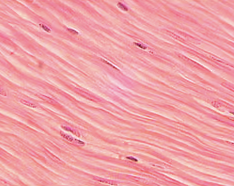Foundational Knowledge/Overview of Dysphagia
1/53
There's no tags or description
Looks like no tags are added yet.
Name | Mastery | Learn | Test | Matching | Spaced |
|---|
No study sessions yet.
54 Terms
Pathophysiology?
Processes that cause, result from, or are otherwise associated with disease or injury
The study of the mechanisms underlying disease processes
Explains the functional and biochemical changes that are associated with or a result of disease or injury
Ex. We don't treat the stroke, we treat the aphasia
Dysphagia spans the __________ and the __________.
Lifespan and work settings
When we make decisions regarding dysphagia and any disorder in general, we emphasize?
Patient-centric, evidence-based approaches
When we look at the extent of a disorder we focus on ___________ VS. ___________.
And what does that entail?
Functionality versus normality
Can they be functional with their disorder or for example their diet
GOAL is to not get back to normal but to get them back functional
What are two key considerations with treatment?
Advocacy and Ethical Implications
Dysphagia occurs in ______ in 25 adults and ______ in 1,000 children per year.
1 in 25 adults
9 in 1,000 children
What are some devastating consequences on health and QOL?
Malnutrition, dehydration, possible death
Limit socialization (which is extremely important for working memory and health) - less socialization accelerates those cognitive issues
According to the AHCPR, approximately ________ if individuals with dysphagia develop PNA.
________ individuals die each year from complications related to PNA.
1/3
60,000
Who does the patient/care team involve with dysphagia?
Patient
SLP
Nursing
Nutrition
Medicine
Psychology
OT or PT
Respiratory therapy
Social Work
Team members very based on settings for e.x. case managers, case navigators
What are some roles of an SLP when working with dysphagia?
Perform: Clinical swallowing, feeding evaluation, instrumental assessment of swallowing functions
Identify: normal and abnormal swallowing anatomy and physiology/sings of possible disorders
Make referrals and decisions of the management of swallowing and feeding disorder
Provide treatment, teaching, counseling
Education and Advocating
What is the swallowing tract that we work on?
Upper aerodigestive tract
What is a sign verus a symptom?
Sign: Something you can see, Ex. A low bolus is a sing of aspiration
Symptom: Something patient is presenting with, Ex. Fever is a symptom of the flu
The nervous system is?
The body’s communication network
What are the two parts of the Nervous System?
Peripheral Nervous System
Central Nervous System
What are the main functions of the nervous system?
Sends signals between different parts of the body
Controls bodily functions and responses
Maintains homeostasis
What is the CNS and what does it include?
Central Nervous System: Sensory Perception: Receiving information from sight, hearing, touch, taste, and smell
Includes the Brain and Spinal cord
What is Motor Control?
Sending signals to muscles to initiate movement
What is thought processing?
Involves cognition, reasoning, decision making, and complex thinkingWhat is
What is emotional regulation?
Processing and Expressing Emotions
What is Learning and Memory in CNS?
Storing and Retrieving Information
What is Homeostasis Maintenance?
Regulating Body Temperature, Breathing, and other vital functions
What is the PNS and what does it include?
Peripheral Nervous System
Nerves that branch out of the brain and spinal cord
Transmits signals between the CNS and the rest of the body
Sensory, Motor, Mixed - Cranial Nervous VS. Spinal Nerves?
CN - Sensory, Motor, and Mixed
Spinal Nerves - Mixed
Somatic Nervous System Vs. Autonomic Nervous System?
Somatic - Controls Voluntary Muscle Movements
Autonomic Nervous System - Regulates involuntary functions and is divided into Sympathetic and Parasympathetic
Sympathetic Vs. Parasympathetic?
S - Fight or Flight
ParaS - Rest or Digest
What are the cranial nerves? Emerge from? How many? Control?
Emerge directly from the brain and the brain stem 12 pairs
Control motor and sensory functions in the head, neck, and beyond
CN I?
Olfactory: Sense of Smell
Sensory
CN II?
Optic: Vision
Sensory
CN III?
Oculomotor: Eye movement (pupil dilation)
Motor
CN IV?
Trochlear: Eye Movement (Superior oblique muscle - vertical eye movement)
Motor
CN V?
Trigeminal: Facial Sensation, Chewing Muscles
Mixed
CN VI?
Abducens: Eye movement (lateral rectus movement - lateral movement of eyeballs)
Motor
CN VII?
Facial: Facial Expressions and Taste (anterior tongue)
Mixed
CN VIII?
Vestibulocochlear: Hearing and Balance
Also known as auditory nerve
Sensory
CN IX?
Glossopharyngeal: Taste (posterior tongue) and swallowing
Mixed
CN X?
Vagus: Heart, Lungs, Digestion
Mixed
CN XI?
Accessory: Shoulder and neck muscles
Motor
CN XII?
Hypoglossal:Tongue Movement
Motor
What are the three types of muscles?
Cardiac, Smooth, and Skeletal
What is the Skeletal Muscle?
Voluntary, attached to bones, responsible for movement
What are the two types of Skeletal Muscles?
Slow Twitch Muscles = Endurance Not speed, Contract Slowly
Ex.
Fast Twitch = Sprint, Twitch Faster, Fatigue Easier
What are type 1 fibers?
slow twitch
Low Speed, High Endurance
What are type 2a fibers?
Fast Twitch - Oxydative
Faster Speed, Less Endurance
What are type 2b fibers?
Fast Twitch - Glycolytic
High Speed, Low Endurance
Is the oropharynx consisted of Fast or Slow Twitch Muscles?
Both, it is both fast and slow twitch, don't fatigue easily
What is the Smooth Muscle?
Involuntary, controls internal movement (organs)
What is the cardiac muscle?
Involuntary, pumps blood in the heart
How does the nervous system control muscles?
Transmits signals from the CNS to muscles

What type of muscle?
Skeletal

What type of muscle
Smooth

What type of muscle?
Cardiac

What type of muscle?
Smooth

What type of muscle?
Cardiac

What type of muscle?
Skeletal